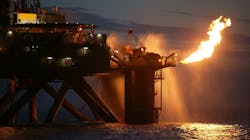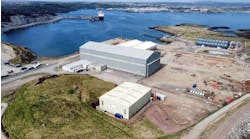Offshore staff
LONDON — Flaring from UK North Sea installations continues to fall, according to the North Sea Transition Authority (NSTA).
In 2022 volumes flared were down by 13% to 22 Bcf, a 50% decrease compared with levels in 2018.
Around one-fifth of emissions from UK North Sea oil and gas production is related to flaring, the NSTA added. While some flaring is unavoidable for safety and operational reasons, the NSTA continues to press for more action to reduce gas waste.
It began benchmarking flaring performance in 2020, and in 2021 it announced that all new UK field developments should have no routine flaring and venting, with zero routine flaring across all North Sea platforms by 2030.
The NSTA, in addition to tracking, monitoring and reporting performance, assesses operators’ applications for flaring consents, and in some cases has issued orders to operators to temporarily restrict production for the facility to stay within agreed limits.
It has imposed fines for consent breaches.
Hedvig Ljungerud, director of Strategy, said, “The NSTA expects reductions to continue and remains firmly focused on both supporting and challenging industry on emissions, including from flaring and venting.”
Operators have made substantial investments in equipment designed to minimize flaring, the NSTA noted, such as flare gas recovery units, each believed to save up to 22 metric tonnes per day of flared gas.
Another factor contributing to the reduction has been cessation of production from older platforms.
Venting, when gas is released without being burned, rose last year by 5% to 2.9 Bcf, following a period of prolonged maintenance shutdowns across multiple platforms in 2021, timed to coincide with work to upgrade major pipelines.
According to the NSTA, venting accounts for less than 5% of North Sea production emissions.
03.09.2023



